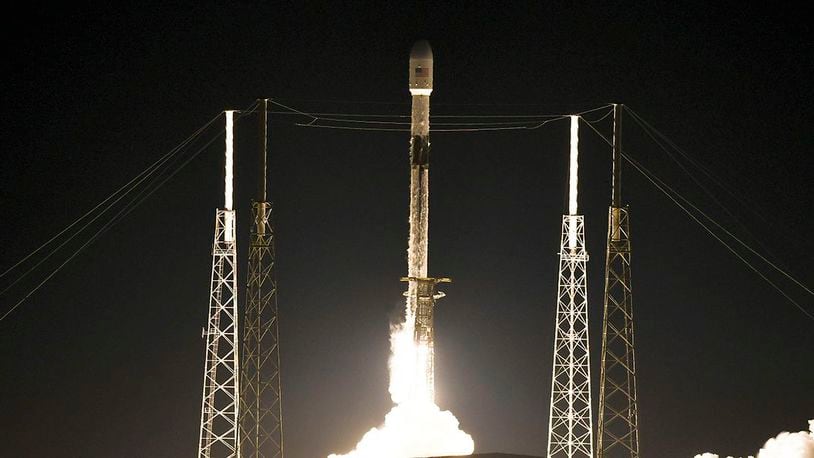LAUNCH!! 🚀🚀 pic.twitter.com/gb1MzenIpD
— SpaceXFleet Updates (@SpaceXFleet) January 7, 2020
If the mission is successful, SpaceX will have 180 Starlink satellites in orbit.
Flight controllers applauded, and the launch commentator described the booster’s fourth touchdown as “awesome.” An hour later, all 60 satellites were free of their upper stage and making their own way in orbit. “It’s a beautiful sight,” the commentator observed.
After the first Starlink batch of 60 was launched in May and the second in November, astronomers complained how the bright satellite chain was hampering their observations. In response, SpaceX came up with a darkening treatment to lessen reflectivity. The coating is being tested on one of the newly launched satellites.
Jeff Hall, director of the Lowell Observatory in Flagstaff, Arizona, said the Starlinks have been just an occasional problem — so far — but noted the risk to stargazing will grow as the constellation expands and other companies launch their own fleets. He heads the American Astronomical Society’s committee on light pollution, space debris, and radio interference, and is working with SpaceX on the issue. The matter is on the agenda, in fact, at the society’s conference in Hawaii this week.
“Anything that darkens the satellites is a step in the right direction,” Hall said in an email Monday. He said it’s too soon to know whether the dark coating will work, “but it definitely is just a first step and not enough to mitigate the issues astronomy will experience with the Starlinks.”
The company’s goal is to create a network of satellites to provide internet service across the globe.
The Associated Press contributed to this report.
About the Author
